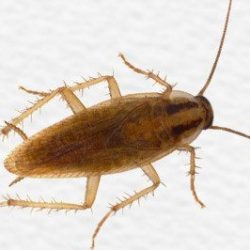German Cockroach Control Toronto & Ontario
What is a German cockroach?
The German cockroaches are the most common cockroach species found worldwide. While German cockroach infestations occur in a variety of human-occupied spaces, they are most often associated with restaurants, food processing facilities, hotels, nursing homes and other institutional facilities. Keep reading to learn more facts and to get information on German cockroach control.
How to Identify German Cockroaches
Pest Stats
What do German cockroaches look like?
Adult German cockroach is recognized by their light brown to tan coloring with two dark, almost parallel stripes, located on their backs. Female German cockroaches tend to be darker than males. German cockroach nymphs are dark brown to black in colour with the same dark stripes located on their backs. While German cockroaches have wings, they rarely fly. Instead, they prefer to run.




















